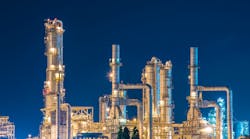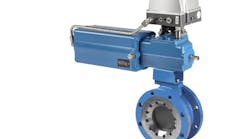In many applications, fluid filtration plays an important role in extending the service life of system components. There are three major areas in a system where filters can be located. They are: Suction Line Filters, Return Line Filters, and Pressure Line Filters.
1. Suction Line Filters: Suction line filters are normally located at the suction line of a pump to protect the pump from particles that can damage and cause problems for downstream components. Such particles may come from debris in the supplying reservoir, rust as a result of corrosion of internal components. When a suction line filter is fine (e.g., low-micron rating of about 25 microns), it causes restriction to inlet flow, and this restriction increases as the filter clogs and at low fluid temperatures. If the filter is too fine, it creates a higher pressure drop than can be tolerated at the inlet line, typically resulting in cavitation. But a low-micron-rated filter can be applied if the pump is force-fed by another pump.
It is advisable that suction line filters should have either a relatively coarse mesh filter or a very large fine mesh filter of about 150 microns. Suction line filters are generally an inexpensive filter option.
2. Return Line Filters: The return line is another location for filters. Return line filters are located on the return line just before the line enters the reservoir. This is to prevent generated or ingested contaminants from entering the reservoir. They are usually installed in systems that don’t have large reservoirs that enable debris to settle out of the fluid. These filters can be offered with ratings from 3-25 microns. But a common rating of 10 microns is typical.
Return line filters are capable of high filtering efficiency at an economical cost because they have sufficient pressure available to force the fluid through the filter media without collapsing the filter housing. This in combination with its very low velocity makes a return-line filter nearly a must in most systems.
3. Pressure Line Filters: Pressure line filters are usually located at the discharge of the pump and where system components, such as valves, have low dirt tolerance. This protects system components that are located immediately downstream of the pump, because they trap very fine particles from the fluid that leaves the pump. Pressure line filters usually have elements with 1-5 microns and have a beta ratio of above 50. Pressure line filters and their housings are designed to withstand full system pressure, and any cyclic pulses generated by variations in the pump operation. These requirements make pressure line filters more expensive than both the suction line filters and return line filters. Pressure line filters are generally limited in application due to their high initial and ongoing cost.
Chikezie Nwaoha previously completed a term as an operator (student trainee) with Port Harcourt Refining Company in Nigeria (PHRC, www.nnpcgroup.com/phrc.htm) and is currently working as a process engineer for Tranos Contracting Ltd. He is also in the process of conducting research for a book titled “Process Plant Equipment Operations and Control.” As part of his research, Mr. Nwaoha has authored over 25 engineering articles in leading international journals. He is a member of SPE, IMechE, ICE, IGEM and Nigerian Gas Association (NGA, www.nigeriangasassociation.org). He is also an ambassador for IMechE in Nigeria. He has a degree in Petroleum Engineering from the Federal University of Technology, Owerri, Nigeria. Mr. Nwaoha can be reached at [email protected], +234-703-135-3749.
www.tranoscontracting.com

